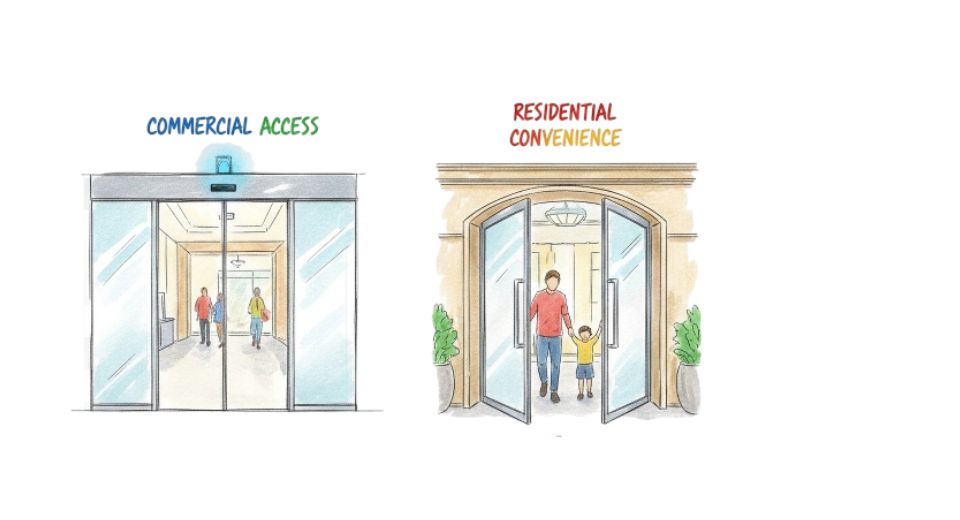
Sep 30, 2025

The global automatic door market reported by Metastat Insight shows how contemporary space is being redefined through subtle but compelling transformations in the connections between individuals and constructed space. From disorganized hospitals that need smooth flow of patients and personnel, to crowded airports where efficiency characterizes the passenger experience, automatic entry systems have transitioned from an extravagance to a pervasive element of everyday infrastructure. Their increasing visibility points to the ways in which convenience, security, and efficiency are converging with daily routines, hinting at a multi-industry public space transformation.
Increased urban density, increased attention to accessibility, and increased attention to building performance have conditioned demand for better entry systems. Conventional door solutions cannot address demands in industries where speed, cleanliness, or controlled access is a priority. Retail stores desire convenient access of patrons, hospitals need touchless passage to prepare sanitary environments, and transportation centers need buildings that handle large traffic flow with accuracy. Automatic Doors have been a response to such needs and are now an integral component of contemporary architecture where convenient access and operational efficiency are real treasures.
At its most basic level, the technology detects presence or movement and opens and closes effortlessly without human touch. This humble action is giant outcomes—minimizing physical contact, maximizing energy efficiency, and improving ease of use for individuals with mobility limitations.
Apart from functionality, such systems form part of bigger security systems characterized by controlled entry and monitoring. Their adaptability embraces sliding, swinging, folding, and revolving configurations, each suitable to unique spatial and functional needs. The power is in offering a balance between user convenience, security, and functional effectiveness in order to make them invaluable where performance has to be compromised.
Adoption trajectory varies from insidious adoption in public spaces to breakthrough locations in high-control markets. Early adoption was focused in usage regions where investment in efficiency yielded returns.
Advances in sensor technology, enhanced materials, and advanced automation software broadened appeal and availability over time. Increased efficiency in energy-saving products and introduction of custom designs that blend with architectural style assisted the market. Originally a niche convenience, it is now a settled preference with ongoing performance and variety improvement.
The diffusion has penetrated further in areas that have invested in infrastructure, where commercial enclaves, transport infrastructure, and health facilities incorporate automation into rudimentary design criteria. These areas are where automatic systems are adopted as the standard option and not as an additional facility. The developing markets, though, present a new horizon for expansion with urban development gaining momentum and governments shifting their focus to better infrastructure. Investments in public infrastructure, office real estate, and healthcare growth create fertile ground for mass consumption.
Developed and emerging nations see the technology as an indicator of being modern and efficient in business.
While there are definite benefits, there are also obstacles in the environment. Installation fees, upkeep expenses, and compatibility issues can hold back adoption for certain segments. Front-end money is more appealing to small companies than back-end rewards. Furthermore, different regimes in different areas create patchwork requirements that must be satisfied by manufacturers and installers. However, such limitations are offset by robust opportunities.
New trends in sensor intelligence, energy efficiency, and connectivity are creating new opportunities. Connectivity with security systems and smart building technologies is delivering added value over mere automation. Increasing awareness of hygiene, accessibility, and sustainability propel more momentum, positioning the market for sustained growth.
The Automatic Door market around the world being served by Metastat Insight is representative of broader change occurring across sectors. Construction is no longer merely construction, but experience, security, and sustainability. Touchless technologies increasingly take on the responsibility of safeguarding public health, while energy-saving designs respond to appeals for sustainability. Urban expansion continues to demand solutions managing exactly both human numbers and resources. Automatic entry systems fill this nexus, providing returns that mirror priorities of society, environment, and technology. As the infrastructure expands and aspirations change, their contribution will become increasingly important, building the future of people's connections with the buildings they live their daily lives in.
Drop us an email at:
Call us on:
+1 5186502376
+91 73850 57479